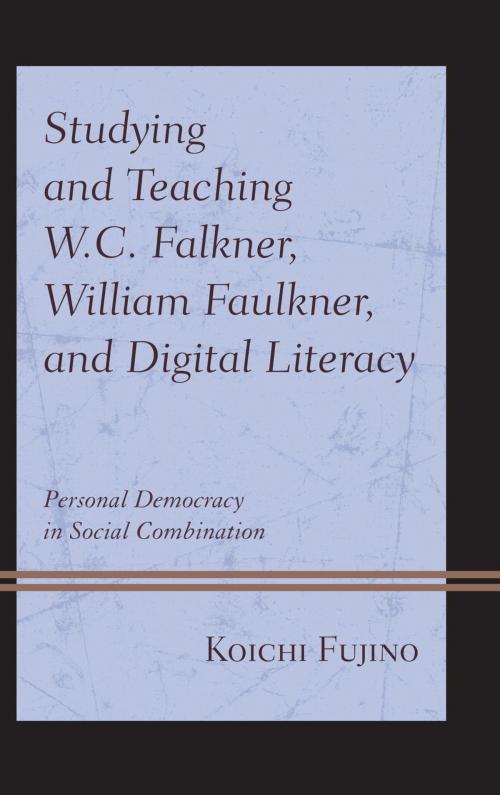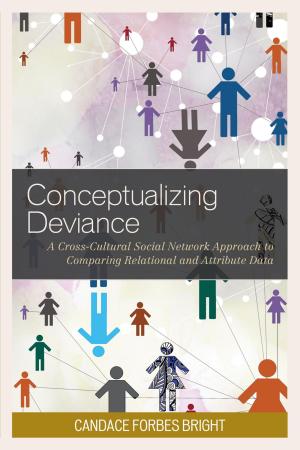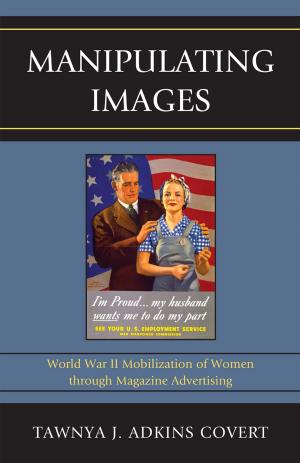Studying and Teaching W.C. Falkner, William Faulkner, and Digital Literacy
Personal Democracy in Social Combination
Fiction & Literature, Literary Theory & Criticism, American| Author: | Koichi Fujino | ISBN: | 9781498547482 |
| Publisher: | Lexington Books | Publication: | November 22, 2017 |
| Imprint: | Lexington Books | Language: | English |
| Author: | Koichi Fujino |
| ISBN: | 9781498547482 |
| Publisher: | Lexington Books |
| Publication: | November 22, 2017 |
| Imprint: | Lexington Books |
| Language: | English |
This book explores the ways to teach the literary works of William Clark Falkner and William Faulkner to ESL (English as a Second Language) students in today’s digital environment. William Faulkner’s great-grandfather, William Clark Falkner, wrote romantic literary works, and William Faulkner critically uses the motifs of his great-grandfather’s works to establish his literary world. Applying Mikhail Bakhtin’s dialogical theory, this book theoretically explains how these two authors imagine the social formations of the American South differently in their literary works. The coined term, social combination—which is defined as the individuals’ mutual effort to have equal relationships for a certain time—is used as a key term to examine how these two authors depict the characters’ personal relationships. William Faulkner employs his characters’ social combination as a resistance against the American South’s romantic illusions that are represented by William Clark Falkner’s literary works. William Faulkner’s historical perspective is beneficial for today’s ESL students, who explore their new egalitarian formations in their digitally expanded world. The last part of this study outlines how an American literary teacher can connect the works of William Clark Falkner and William Faulkner when teaching ESL students by using today’s digital environment. Using three digital platforms—Moodle, WordPress, and Google Drive—a teacher composes egalitarian relationships among class members and inspires students’ autonomous discussion on these two authors’ works. Through these activities, ESL students are expected to comprehend that the literature of the American South is not only the historical development of the foreign region, but the phenomenon that is connected to their own social formations.
This book explores the ways to teach the literary works of William Clark Falkner and William Faulkner to ESL (English as a Second Language) students in today’s digital environment. William Faulkner’s great-grandfather, William Clark Falkner, wrote romantic literary works, and William Faulkner critically uses the motifs of his great-grandfather’s works to establish his literary world. Applying Mikhail Bakhtin’s dialogical theory, this book theoretically explains how these two authors imagine the social formations of the American South differently in their literary works. The coined term, social combination—which is defined as the individuals’ mutual effort to have equal relationships for a certain time—is used as a key term to examine how these two authors depict the characters’ personal relationships. William Faulkner employs his characters’ social combination as a resistance against the American South’s romantic illusions that are represented by William Clark Falkner’s literary works. William Faulkner’s historical perspective is beneficial for today’s ESL students, who explore their new egalitarian formations in their digitally expanded world. The last part of this study outlines how an American literary teacher can connect the works of William Clark Falkner and William Faulkner when teaching ESL students by using today’s digital environment. Using three digital platforms—Moodle, WordPress, and Google Drive—a teacher composes egalitarian relationships among class members and inspires students’ autonomous discussion on these two authors’ works. Through these activities, ESL students are expected to comprehend that the literature of the American South is not only the historical development of the foreign region, but the phenomenon that is connected to their own social formations.















